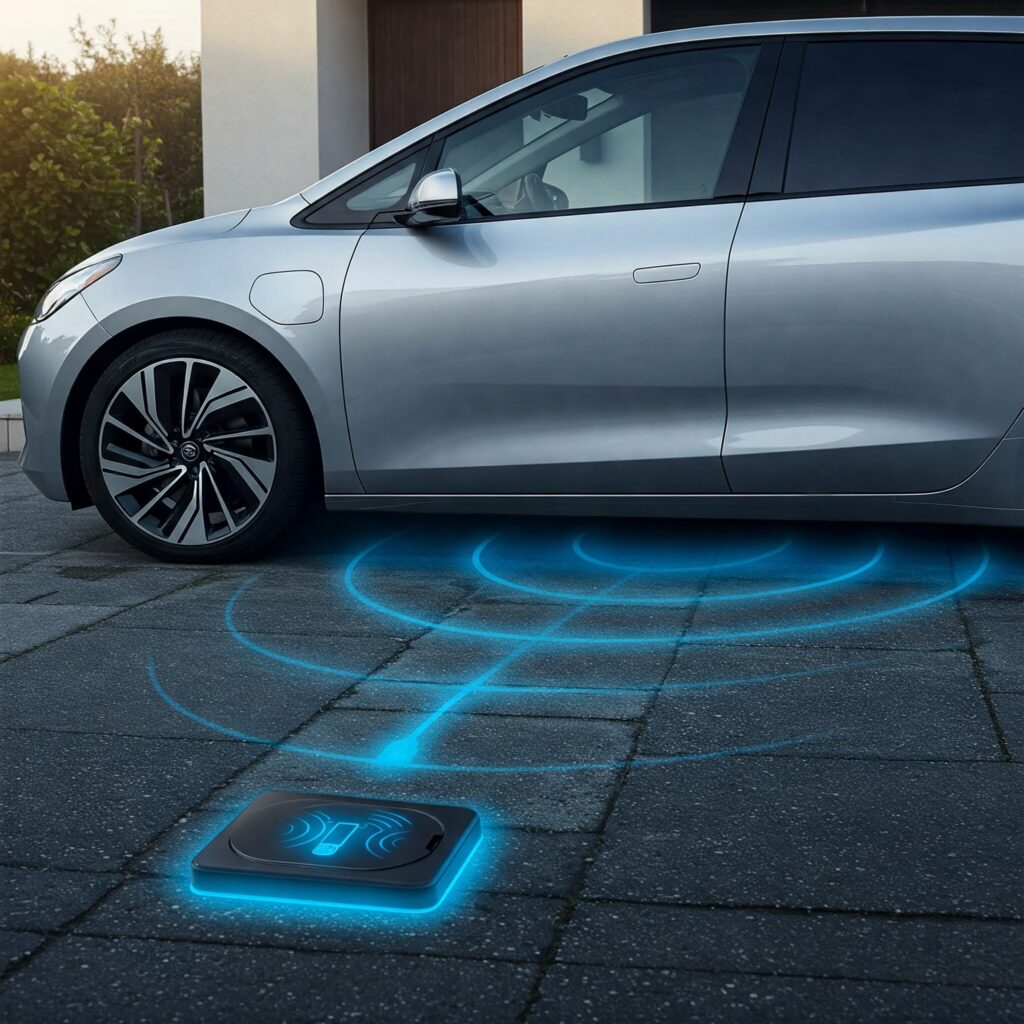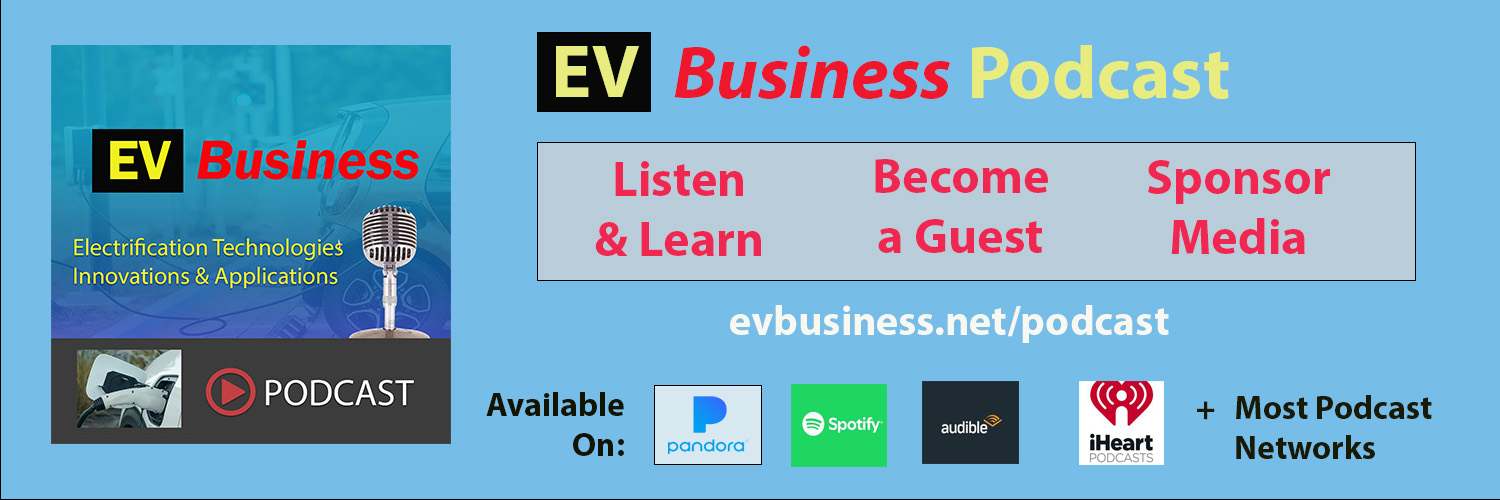By: Tim Meyer
Wireless EV charging technology is a game-changing solution for cars, trucks, and other types of vehicles eliminating the cumbersome charging cables and connectors. Surprisingly, wireless charging can achieve up to 95% efficiency—almost identical to traditional wired charging. However, this technology faces key challenges, including the need for precise vehicle alignment, limited compatibility between different charging pad systems, and higher upfront costs compared to wired chargers. In this article, you will learn how EV wireless charging works, the biggest hurdles it must overcome, and real-world examples of how it’s being implemented today.
How Wireless EV Charging Works
Wireless EV charging, also known as inductive charging, relies on electromagnetic fields to transfer energy from a charging pad embedded in the ground to a coil in the vehicle’s undercarriage. This technology can be applied in both stationary and dynamic settings. For stationary charging, vehicles park over a designated charging pad, while dynamic charging allows vehicles to charge while moving over embedded road coils.
One of the most surprising aspects of this technology is its efficiency. Wireless EV charging can achieve up to 95% energy transfer efficiency with a distance of 12 inches or more, comparable to wired charging solutions. This dispels the misconception that wireless charging is significantly less efficient and showcases its potential as a viable alternative to traditional plug-in charging.
Benefits of Wireless EV Charging
The primary advantage of wireless EV charging is convenience. Users no longer need to fumble with cables or worry about different plug types and adapters. This seamless charging process is particularly beneficial for fleet operators, where multiple vehicles require efficient overnight charging. Additionally, wireless charging can enhance urban infrastructure by reducing cluttered charging stations and enabling embedded road-based charging systems.
Another significant benefit is improved durability and safety. Traditional charging cables are subject to wear and tear, exposure to harsh weather conditions, and potential vandalism. Wireless charging eliminates these risks by removing the need for physical connectors, thereby enhancing system longevity and reducing maintenance costs.
Challenges of Wireless EV Charging
Despite its promising benefits, EV wireless charging presents several challenges that must be addressed before widespread adoption.
1. Precise Alignment for Efficiency
For optimal energy transfer, the vehicle’s receiving coil must be precisely aligned with the ground-based charging pad. Any misalignment can reduce efficiency and lead to incomplete charging. While modern vehicles are being equipped with alignment assistance systems, this remains a key implementation challenge.
2. Limited Availability and Compatibility Issues
Currently, only a few automakers, including Mercedes and Tesla, have begun incorporating wireless charging technology into their vehicles. Moreover, different manufacturers may develop proprietary charging solutions, leading to potential compatibility issues between charging pads and vehicles. Industry-wide standardization is needed to ensure seamless adoption across all EV brands.
3. Higher Installation Costs
Installing a wireless charging system is generally more expensive than traditional wired chargers. While the long-term maintenance costs may be lower due to reduced wear and tear, the initial investment can be a barrier for widespread implementation. Businesses and municipalities must evaluate the cost-benefit ratio before transitioning to wireless charging infrastructure.
Implementing Wireless EV Charging
For successful implementation, wireless charging requires both ground-based infrastructure and vehicle integration. Charging pads must be embedded into parking spaces or roads and connected to a power source, typically operating at 240 volts for efficient energy transfer. Vehicles, on the other hand, need built-in receiving coils and software that allows for alignment and power regulation.
Several features enhance the usability of wireless charging, including automatic coil alignment, obstruction detection, and bidirectional power transfer. Vehicle-to-grid (V2G) capabilities allow EVs to not only receive power but also send excess energy back to the grid, improving overall energy efficiency.
The Future of Wireless EV Charging
While still in its early stages, EV wireless charging is rapidly gaining traction. Tesla has announced plans to integrate wireless charging into its upcoming RoboTaxi fleet, signaling a shift toward autonomous charging solutions. Additionally, various startups and industry leaders, such as Witricity and InductEV, are focusing on commercial applications, particularly for buses and fleet vehicles.
Looking ahead, standardization efforts by organizations such as the Society of Automotive Engineers (SAE) will play a crucial role in making wireless charging a universal solution. As infrastructure expands and costs decrease, EV wireless charging could become a mainstream option, reducing reliance on traditional charging stations and accelerating the global transition to electric mobility.
Conclusion
Wireless EV charging presents an innovative and practical solution to one of the biggest challenges facing electric vehicle adoption. While challenges such as alignment, standardization, and cost remain, ongoing advancements and increasing industry interest suggest a promising future. By eliminating the need for physical connections and enhancing user convenience, wireless charging has the potential to revolutionize the EV landscape. As more companies invest in this technology, the dream of effortless, autonomous EV charging is closer than ever before.
About Tim Meyer
Tim Meyer is EV Technology expert specializing in renewable energy solutions and sector coupling. With over 27 years of experience in technology and management within the renewable energy and energy industries, Tim has held executive positions, including Chief Technology Officer at DirectNu Energy and board member at Inductive Robotics.


